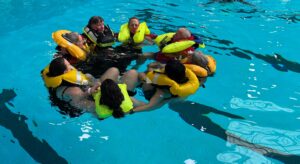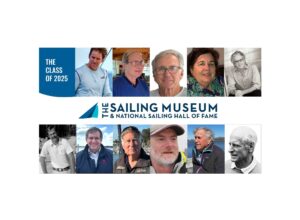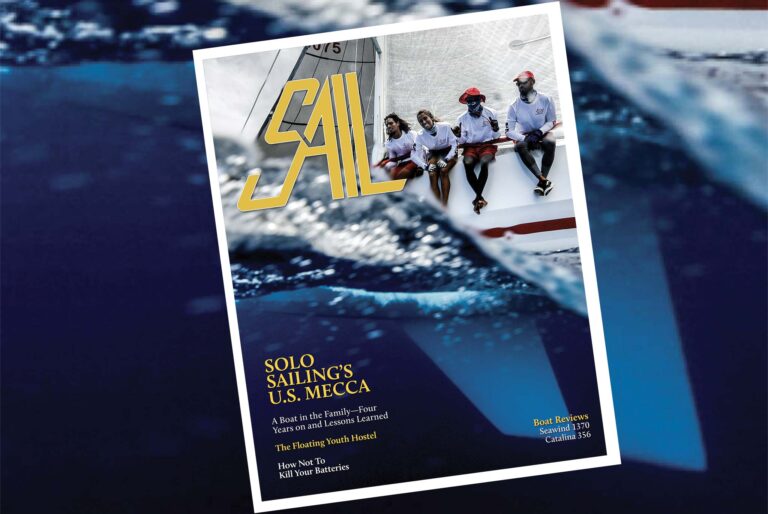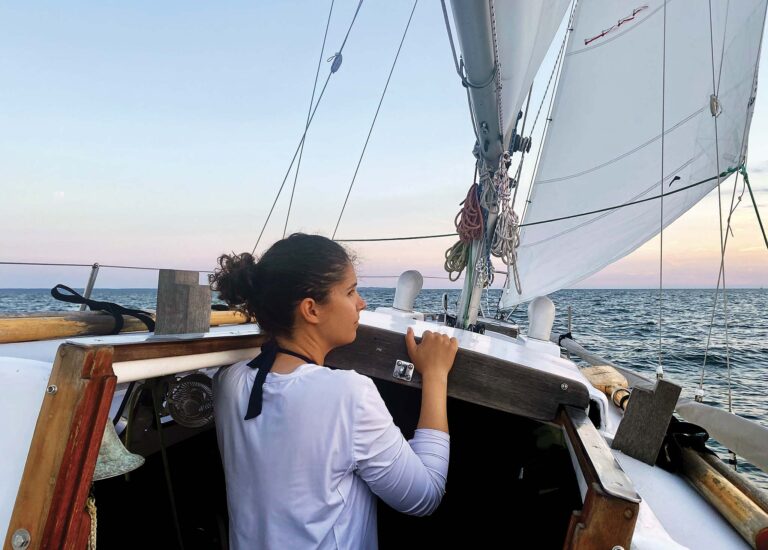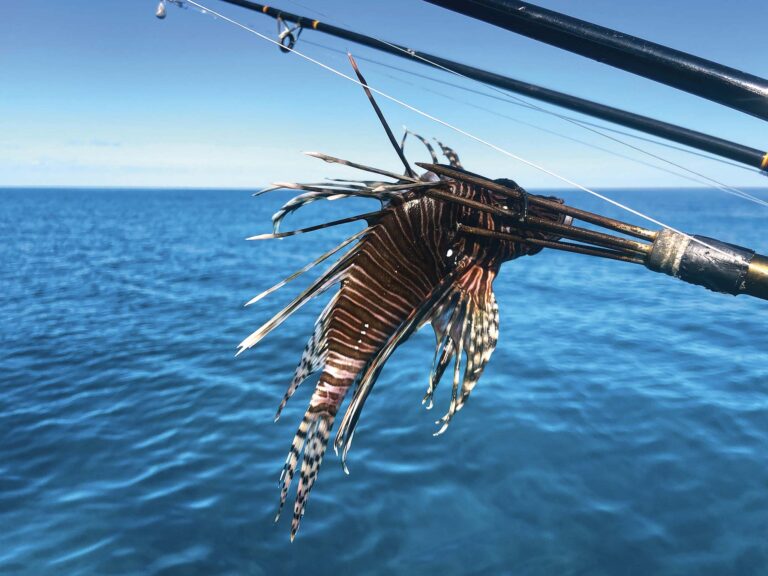
We had always said some day we would do it. That day had come, and Rob and I were on board our 38ft steel sloop, Il Silenzio, cruising the Fiji Islands and enjoying an idyllic island summer while most cruisers headed for the cooler waters around Australia and New Zealand, away from the hazards of the strong tropical weather systems. So much of what Fiji offered appealed to us—a warm climate, warm Polynesian welcome wherever we went, diverse sailing opportunities and an easy, relaxed pace of life, so the choice to stay through the summer was easy. But we knew we had to be prepared for cyclones.
By February we were gasping—the hottest summer anyone could remember was in full swing, and the water temperature was a crazy 90 degrees. All the locals were convinced a cyclone was on the way, as the air and water temperature were certain indicators of a looming storm. We had already experienced a Category 3 cyclone while approaching Fiji just six weeks before, right after the New Year, so we had our sheltering strategy well worked out. When tropical cyclone Winston first appeared on the horizon in mid-February, we swung into action.
After sailing in from the Mamanuca island group to Denarau Harbour on the main island of Viti Levu to be close to our cyclone hole, we tracked Winston closely. For about 10 days it slowly strengthened as it followed an unpredictable path southward through waters to the west of Fiji. All cruisers and commercial vessels were on high alert for several days, but Winston did not make landfall, and slowly traversed from west to east around the bottom of Viti Levu, before moving off toward Tonga.
[advertisement]
Predictions were mixed as to what would happen next. Unfortunately for Fiji, Winston turned, paused for a half day, then headed directly back toward the islands. By this time it was a Category 5—the strongest cyclone category—and it was the biggest storm ever recorded in the Southern Hemisphere.
Meteorologists predicted two possible pathways the cyclone might take at this point, and over the next two days the worst of all possible worst-case scenarios unfolded. Moving at a scorching 25 knots and packing winds of up to 180mph, Winston slammed into northern Fiji, impacting a wide area that included the top end of Viti Levu, the bottom of Vanua Levu and all the smaller islands around them. This trajectory meant that the cyclone wreaked havoc first in the outer islands in the eastern Lau Group, then on the northern and eastern coasts of Viti Levu, on southern Vanua Levu, Taveuni, and lastly in the Yasawas. Dozens of remote villages were devastated. All of this we were to discover later, as all communications were lost during the storm and for days afterward.

When we’d decided to stay in the tropics over the summer, we had planned to head for the protection of the mangroves if a cyclone came through, so we stuck to this strategy when Winston appeared. The tall, stout mangrove trees in the river we had chosen were over 13ft high, and this (we hoped) would provide shelter from high winds and heavy seas, with only the top of the mast exposed to the wind. With anchors out ahead and astern, combined with secure ropes tied in to trunks and roots around us, we thought this setup should be sufficient for bracing the storm.
Around a dozen cruisers waited in Denerau Harbour as Winston did its own bit of fickle and volatile cruising on the edges of Fijian waters. We had all done exploratory trips up the river in our dinghies and kayaks, some with depthsounders, some with sticks, to determine the best path in, and the best spot for everyone to secure themselves in a good position. We jointly created a map so everyone could navigate the river safely to their chosen spot.
When the call went out that Winston had turned, we moved up the river at high tide while the weather was still calm and selected our spots on the sides of the river. The monohulls entered the river first to take the deepest positions, and Il Silenzio’s 4ft 6in draft was easily accommodated, while boats with much deeper drafts found safe locations as well. Some boats had more problems than others navigating in this constrained space, but with everyone keen to help everyone else, all eventually reached a safe place.
After the monohulls, the catamarans motored in to take their positions in the shallower water. Eventually more than 30 sail and motor boats of all shapes and sizes had entered the river. Anchors were dropped forward and aft. Lines were tied onto the mangroves immediately alongside. These would be moved, tightened, loosened and tightened again dozens of times over the next 48 hours. Everyone pitched in, following the lead of the old hands and the local Fijians to ensure everyone was securely tied up.
After all the boats were positioned, the final bracing commenced by taking lines across the river. All dinghies were in action during this phase to ensure that all points of each boat were stabilized. The result was a spaghetti-like matrix of ropes. At only 150ft across, with a muddy bottom for good anchoring, this was an excellent refuge. We filled the dinghy with water to stabilize it, took everything off the deck, removed the headsail and lashed the mainsail tightly to the boom.
Then we waited. More anchor checking. More rope adjustments. We knew Winston, traveling at 25 knots, was closer than we wanted, but once communications were lost we didn’t know how close.
[advertisement]
By evening the wind was 40 knots and rising steadily. The sound from the exposed top half of the rigging intensified to a piercing shriek as the wind gained speed. The dull groan from the hull swelled to a pulsing throb as the gale ripped over us at 100 knots. Il Silenzio was being thrown about in the dark like a cork, but we trusted her steel hull and the preparation we had done.
More was to come in the form of an onslaught of rain in dense sheets, with flashes of lightning and crashing thunder. The initial wind direction combined with the low spring tide drained the river. Il Silenzio touched the bottom in the early hours of the morning and at low tide lay on her hull at a 40 degree angle on a cushion of mud. Sleep was impossible, so we sat and listened to the drama playing out above us.
As the storm eased toward morning, the tide came in and Il Silenzio popped upright. Our fitful dozing drifted into a restless sleep, difficult in 100-degree heat, but possible after a mostly sleepless night. When the most severe winds abated in late morning we assessed the damage. No boats had broken free, and the damage to the fleet was minimal. Il Silenzio was also in good shape, apart from a lawn of dark and shredded mangrove leaves enveloping the deck. Our bolt hole choice had been a good one.

A cyclone of this magnitude had never been seen by the people of Fiji. The wind tore apart homes, stripped fruit and coconuts from the trees, and fouled the drinking water supply with ocean water. What the wind did not destroy in coastal settlements, the storm surge of waves carried out to sea. Thousands of people in remote locations were left without shelter and food. Food crops were reported totally destroyed in the worst-affected areas. The government immediately declared a 30-day state of natural disaster.
Many of the cruisers who safely weathered the storm immediately stepped up to volunteer with the first-response disaster relief charity Sea Mercy, which sidesteps the initial international aid bottleneck that can occur during the first period after the disaster by purchasing and staging as much crucial aid as possible (shelter, food, water, medical supplies, etc.) for private vessels to deliver and meet emergency needs. Sea Mercy was officially tasked by Fiji’s government to help meet the needs of the “at risk” remote island citizens devastated by the cyclone.
Action was swift. Rob and I set to work establishing a warehouse in the port of Denarau to receive and ship out donated food, clothing, shelter and other supplies. Four sailboats were soon loaded up and on their way to the Lomaiviti Group. After that first run, they were re-stocked via truckloads of supplies taken to staging areas on the northern mainland coast, allowing them to make multiple trips with provisions for remote islands in need. These communities welcomed the urgently needed supplies with open arms and huge Fijian smiles. The government followed up in the following days with further assistance to support the villages.
Both cruisers and Fijians have big hearts, and it was inspiring to see how they united to help the people of Fiji and started to repair and replace what had been torn apart by Winston.
Jenny Keene is a travel writer and photographer from New Zealand. She is still in the Fiji Islands onboard Il Silenzio
May 2016

